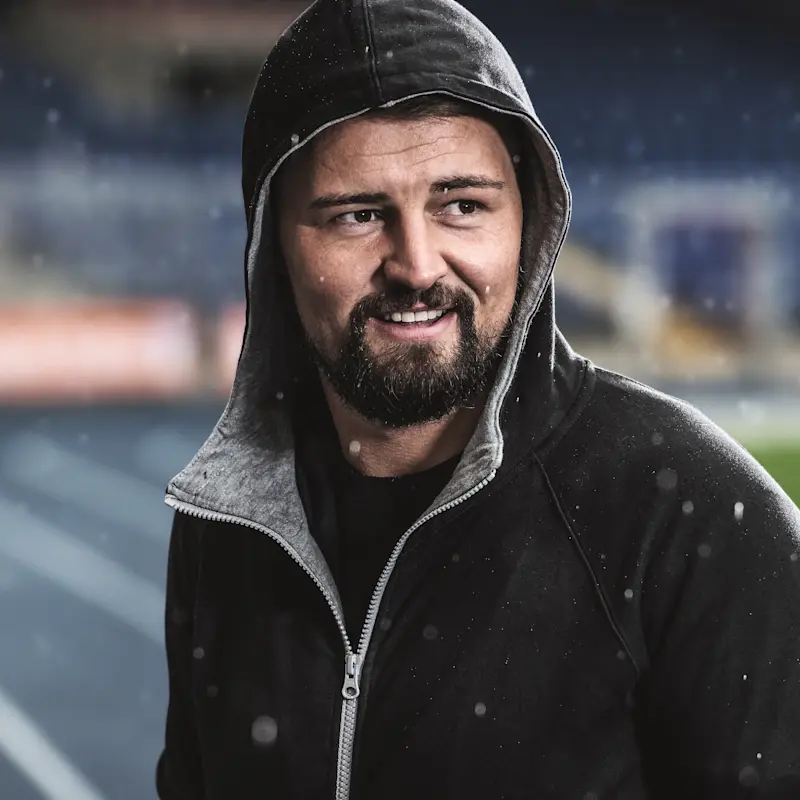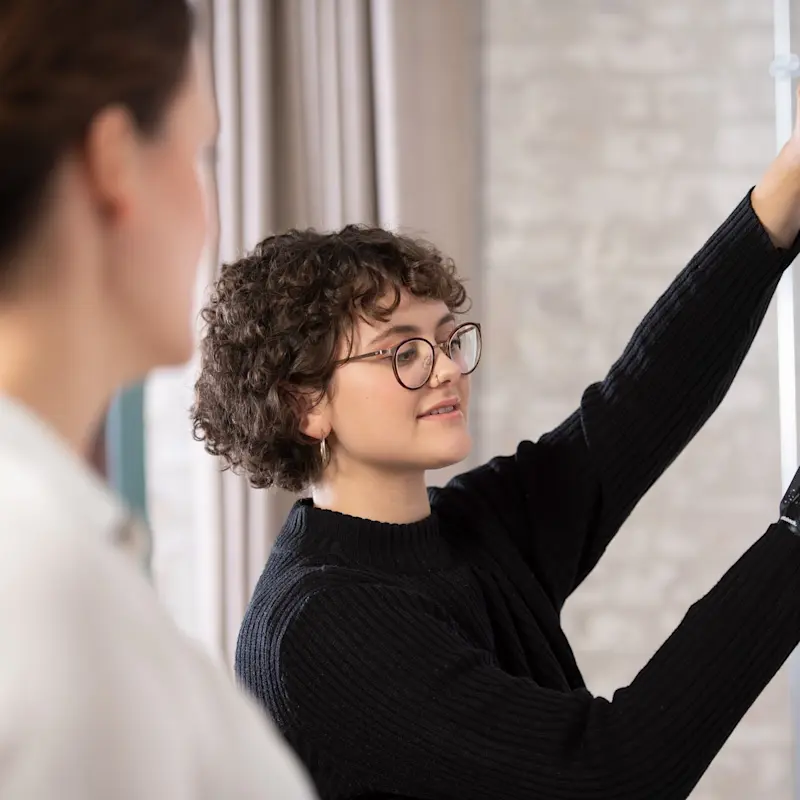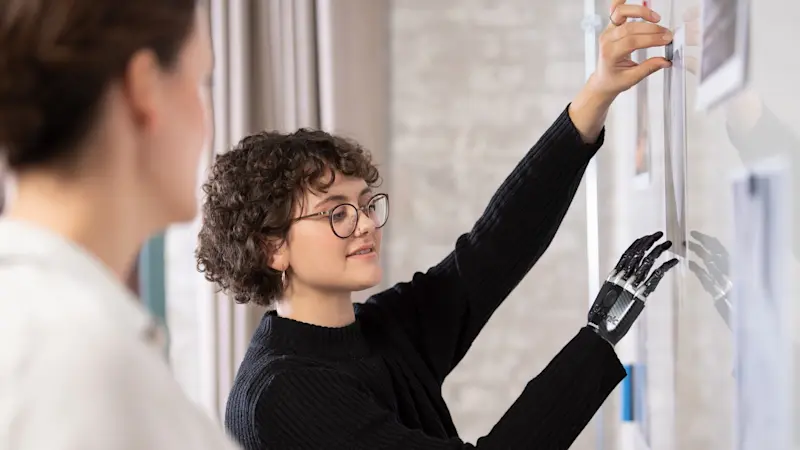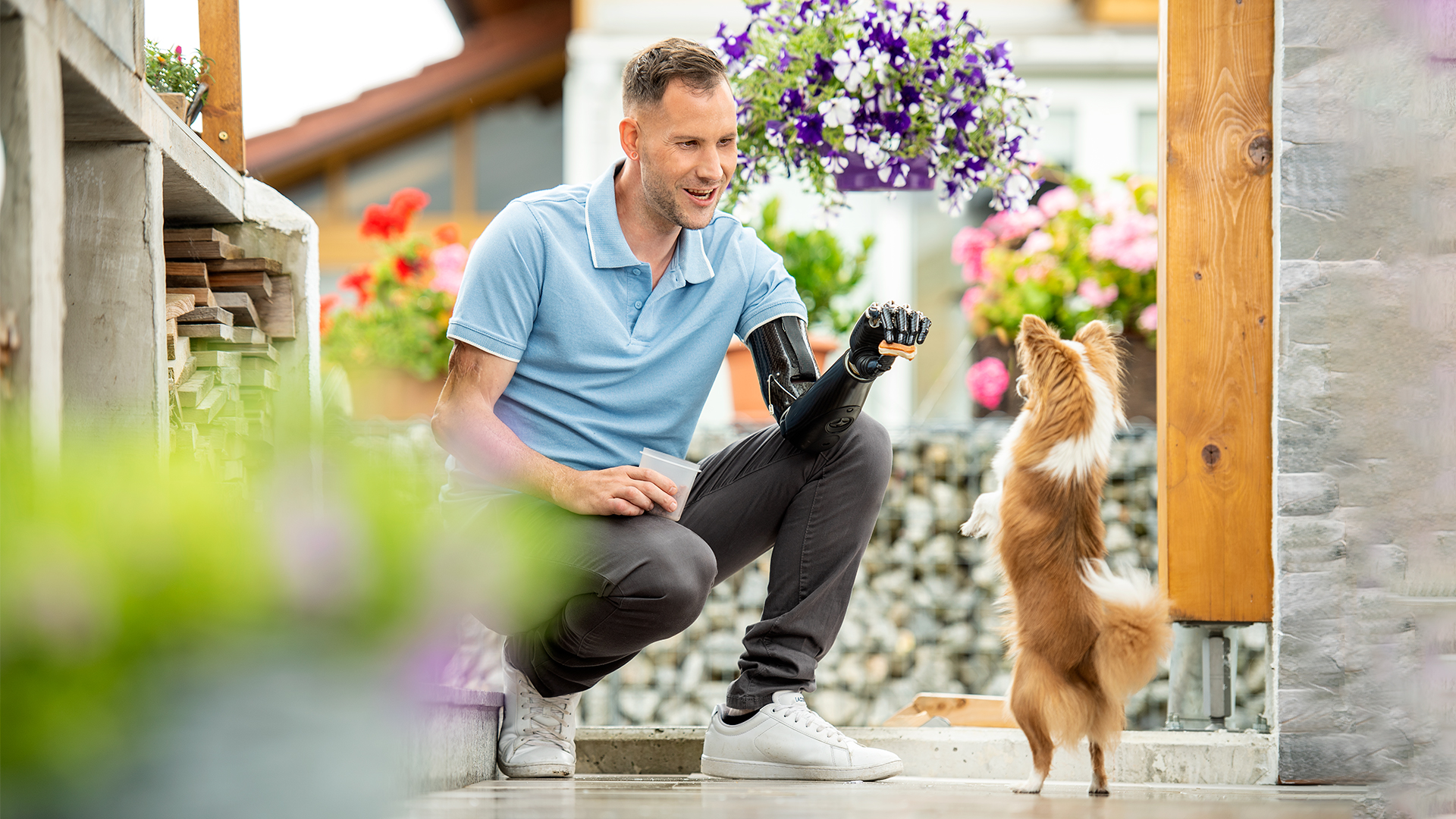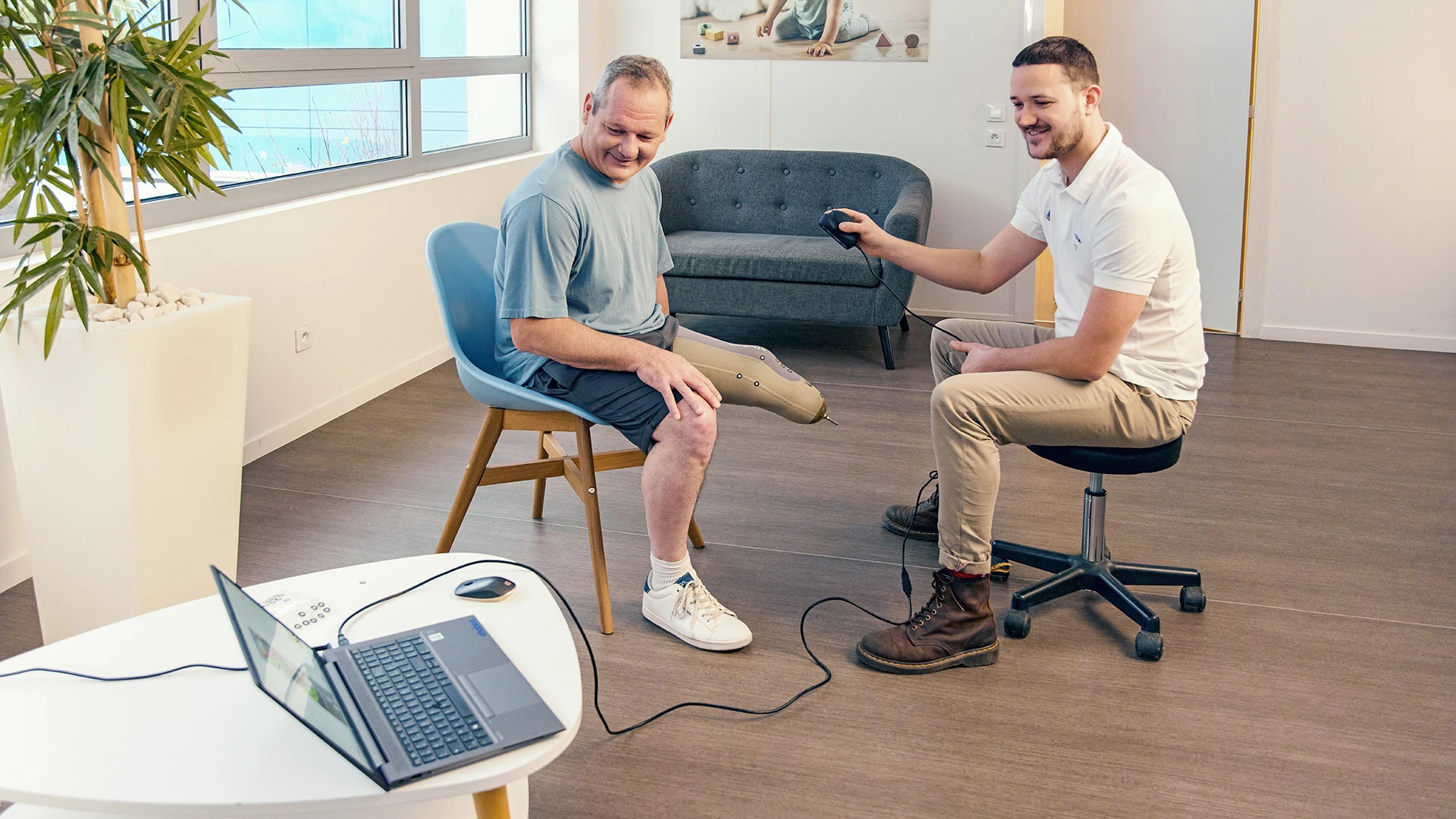Ottobock is digital. Ottobock is human.
We invest in solutions that build bridges between humans and technology. Around the world, our digital start-up teams drive innovation.
We invest in solutions that build bridges between humans and technology. Around the world, our digital start-up teams drive innovation.
Shaping the future together
Artificial intelligence (AI) for intuitive movements
How does a hand prosthesis know when to flex a finger and type on a keyboard? In the past, people with an amputation had to spend considerable time learning to give their prosthesis complex signals via muscle contractions. Today, prostheses can learn from their users. Thanks to electrodes that capture biosignals in the residual forearm and artificial intelligence, Ottobock prostheses are able to identify how the user wants to move and automatically assign these signals to the correct hand movement.
Michael Friedrich Russold, Research and DevelopmentThe next exciting step in the future will be prostheses that can "feel". Ideally, the user should feel that the prosthesis or orthosis is part of their own body – a natural extension of the body, so to speak.

Control via smartphone and app
Right from the start, O&P professionals use a special app when fitting and adjusting this type of prosthesis. After this, users can manage and practise controlling the prosthesis themselves on their smartphone.
And if they give their consent, devices can even be serviced via the cloud in future. The prostheses will then be able to send direct feedback to Ottobock so we can optimise the technology and avoid potential errors before they occur.
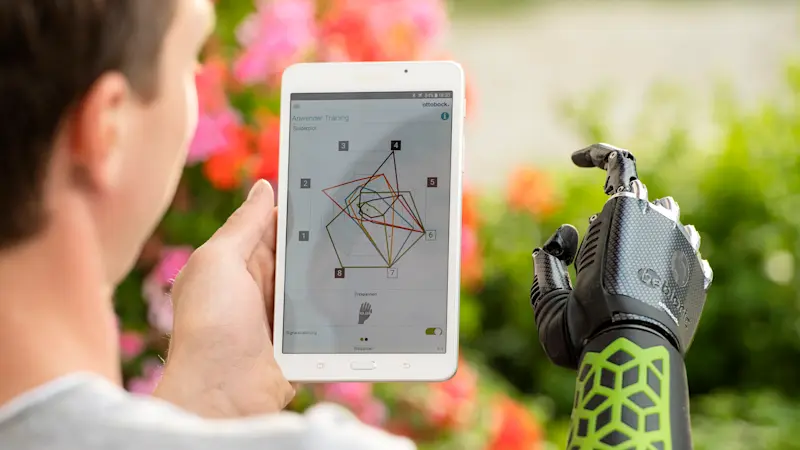
Smart sensors and microprocessors
Ottobock introduced the C-Leg – the world’s first leg prosthesis to be controlled by microprocessors – back in 1997. The experiences we gained in the process led to the introduction of the Genium in 2011. This solution simulates a natural, physiological gait almost perfectly with the help of microprocessors, microsensors and micromotors. This enables users to move with maximum safety, even on difficult surfaces.
Combined advances in computer, sensor and motor technology mean that users can now use the prostheses for running, cycling and swimming. Users can simply select the various modes; an app on their smartphone is one way of doing so. This demonstrates how digital transformation is opening up new opportunities. At the same time, it also creates new requirements – so a special coating on Ottobock’s bebionic hand prosthesis now makes it easy to interact with touchscreens on mobile phones or tablets.
Heinrich Popow, Global Liaison ManagerAs someone who wears a leg prosthesis, I'm basically the interface between users and developers. My hope for the future: to actually "feel" with my artificial leg, so that it's more like a natural part of my body.
